Looking for something to celebrate 2021’s Black History Month, I went back through my files to see if there was anything harp-guitar-related that I might have somehow missed. Indeed there was. It was this second image of the “Greater Invincible Concert Company” that I had neglected to add with the other stunning image of the group to my 2013 article on Black Harp Guitar Players.
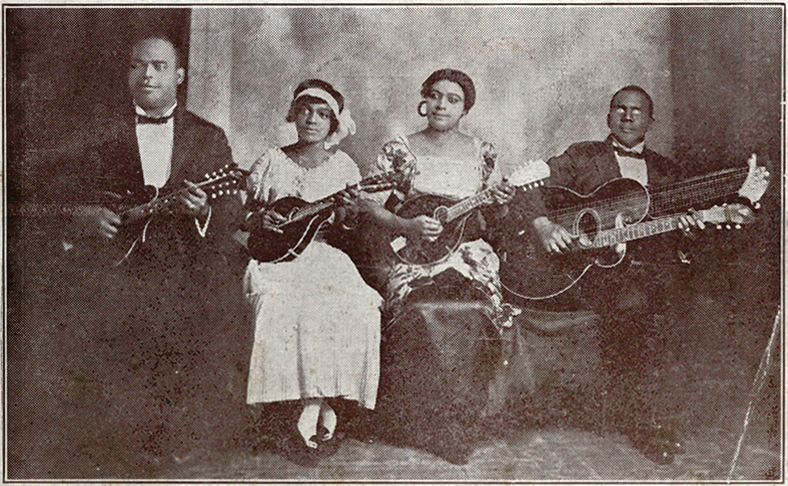
While the majority of harp guitarist images are typically found without provenance – and the scans of the two G.I.C.C. images were donated by one Erik Carter without any provenance – I felt remiss in not returning to investigate these haunting images. Surely, some records must exist!
And indeed, they do. Hundreds of newspaper ads and announcements attest to the popularity of the two gentlemen – the “Two Blind Wonders,” “to whom all instruments are alike.” With various incarnations of their “Invincible Four” quartet entertaining mixed audiences for a decade, they were at one time said to be one of the two “highest salaried colored acts in the country.”
I present here the key stages of their career.
James Johnson grew up in Arkansas City, Kansas, where he lost his sight as a young man. While playing baseball, he was hit in the eye by a stray ball, which not only blinded him in that eye, but mysteriously caused the other eye to turn blind as well. (I’ve yet to confirm whether Johnson is the man with the startling white eyes or the taller gentleman.)
Johnson was educated at the School for the Blind in Kansas City, Kansas, while his future partner Edward Mackey attended its counterpart in St. Louis, Missouri. Presumably, the two kindred musicians connected through these organizations.
In one news clipping, their “main” instruments are given as Johnson on violin and Mackey on piano, but both also played “any stringed instrument.” In truth, they each played piano, all the plucked stringed instruments, as well as brass and saxophones. Only the violin is unclear; if that was the one instrument that Mackey did not also play, then an image below would indicate that Johnson “the violinist” was the smaller performer with the stark white eyes. (For the purposes of discussion, I’m going to refer to them this way, though it’s still a 50-50 guess)
All of their various quartet and ensemble partners were – or became – multi-instrumentalists as well, with a specific mention at one time of “34 instruments” played. The wonderful photo below that I’ve had up on Harpguitars.net for some time displays over 18 instruments, including 5 horns, 3 saxophones, 1 violin, 2 banjos, 3 mandolins, 2 harp mandolins, and 2 harp guitars!
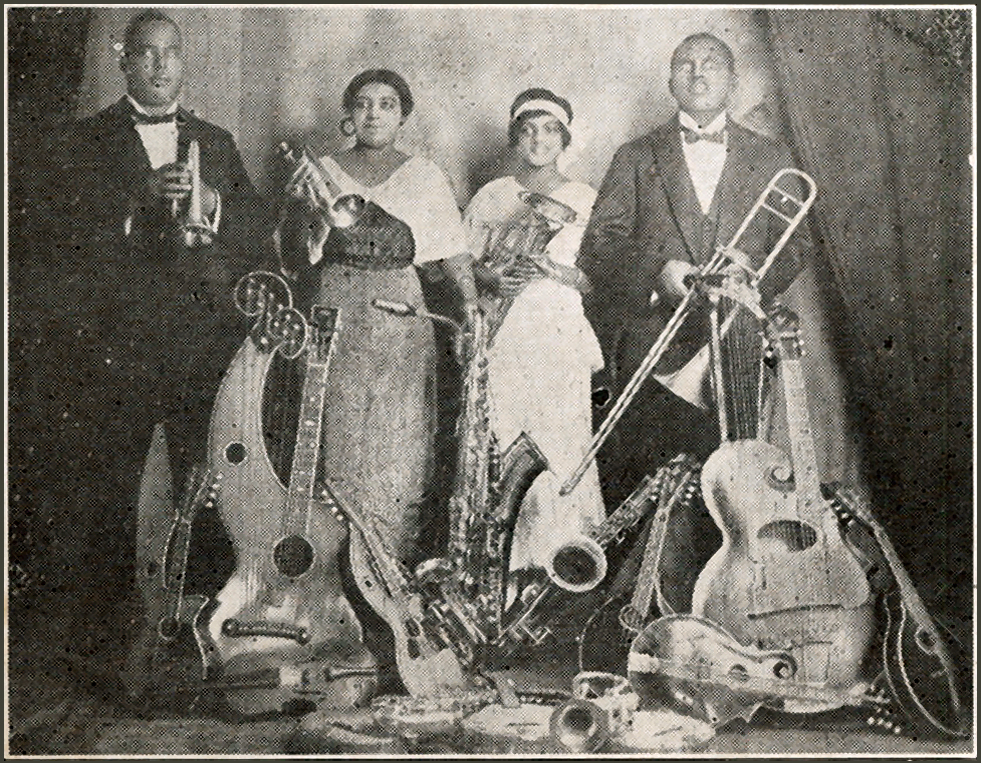
The “Invincible Four” first appeared in 1912 playing the Midwest. The other two original members were William Turner and Blanche Thompson, whom I believe we are seeing in the next three images, the first from a North Dakota performance in October 1914.
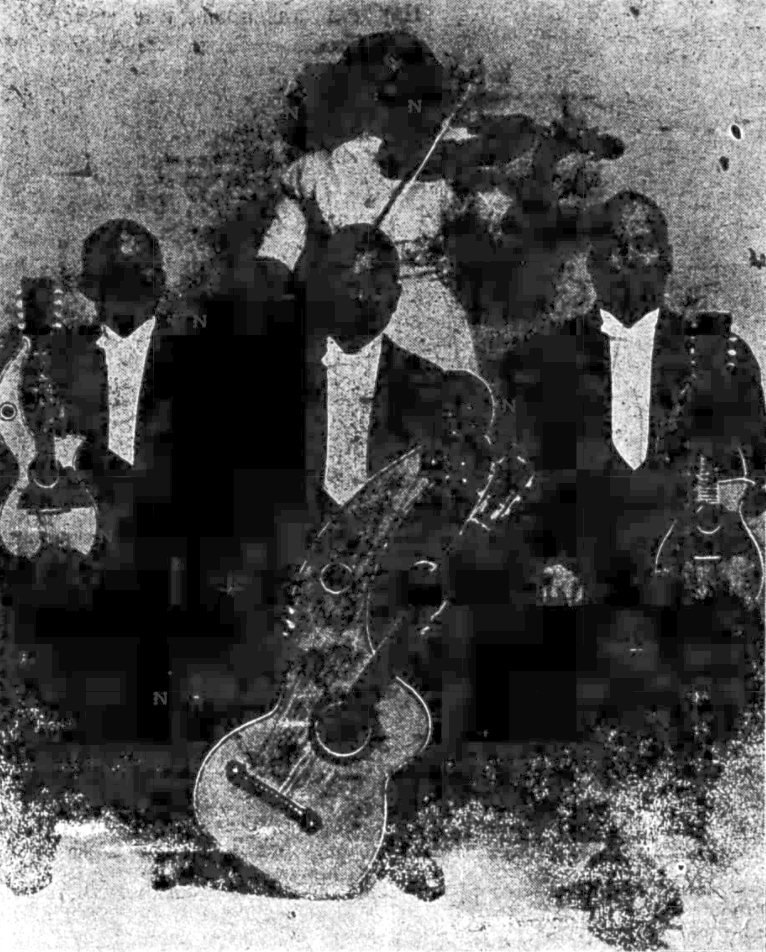
Here, Thompson plays the violin, while Turner holds a W. J. Dyer & Bro. “Style 7” harp guitar. Mackey and Johnson each hold Dyer harp mandolins. These instruments were built for the Dyer firm by the Larson brothers of Chicago circa 1910 and were some of the finest stringed instruments available, an extravagant and exotic purchase. I’m curious why the blind musicians were drawn to them (and how they learned of and acquired them). I’m reminded of a blind woman who was with us at the first European harp guitar festival in France; she was fascinated by our instruments, each of them very different, as she could so easily enjoy and “see” how fantasical and wonderful they were while exploring them by touch.
The quartet members were described as “singers and Instrumentalists” or sometimes “singers and comedians.” The group must have been funny indeed to make that latter reporter forget all about their instruments!
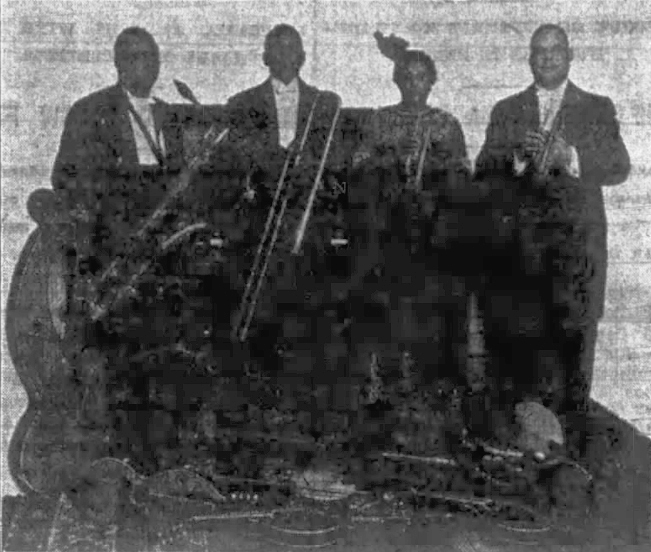
Above, this Anaconda, Montana newspaper image from December 1914 demonstrates that the quartet was playing not only all the stringed instruments, but brass and sax from the beginning.
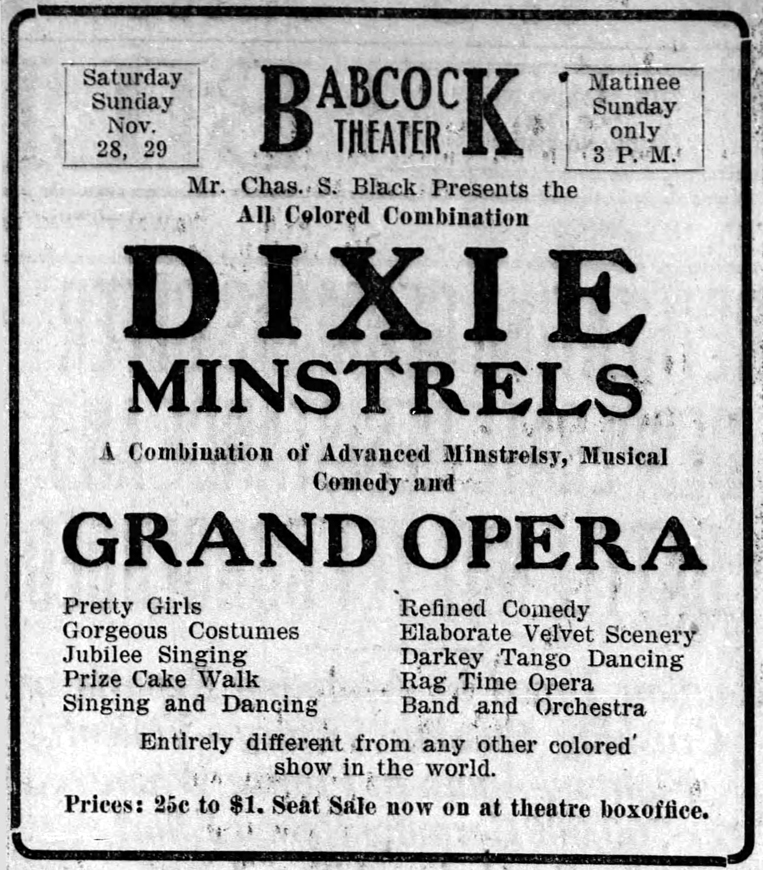
By late 1914, an act called the “Dixie Minstrels” was touring the Midwest and Southeast. This was an elaborate “minstrelsy musical comedy and grand opera” with a “plot” centered around the two blind musicians. The Invincible Four were joined by the “Dixie Serenaders,” a group of equally popular singers and dancers.
The Dixie Minstrels ad above is from The Billings Gazette, Montana, 11/29/1914; below is from The Herald-Bulletin, Burley, Idaho, 1/22/1915. Thompson is on mandolin-banjo, Turner retains the Dyer harp guitar, “Mackey” has his Dyer harp mandolin, and “Johnson” is on violin.
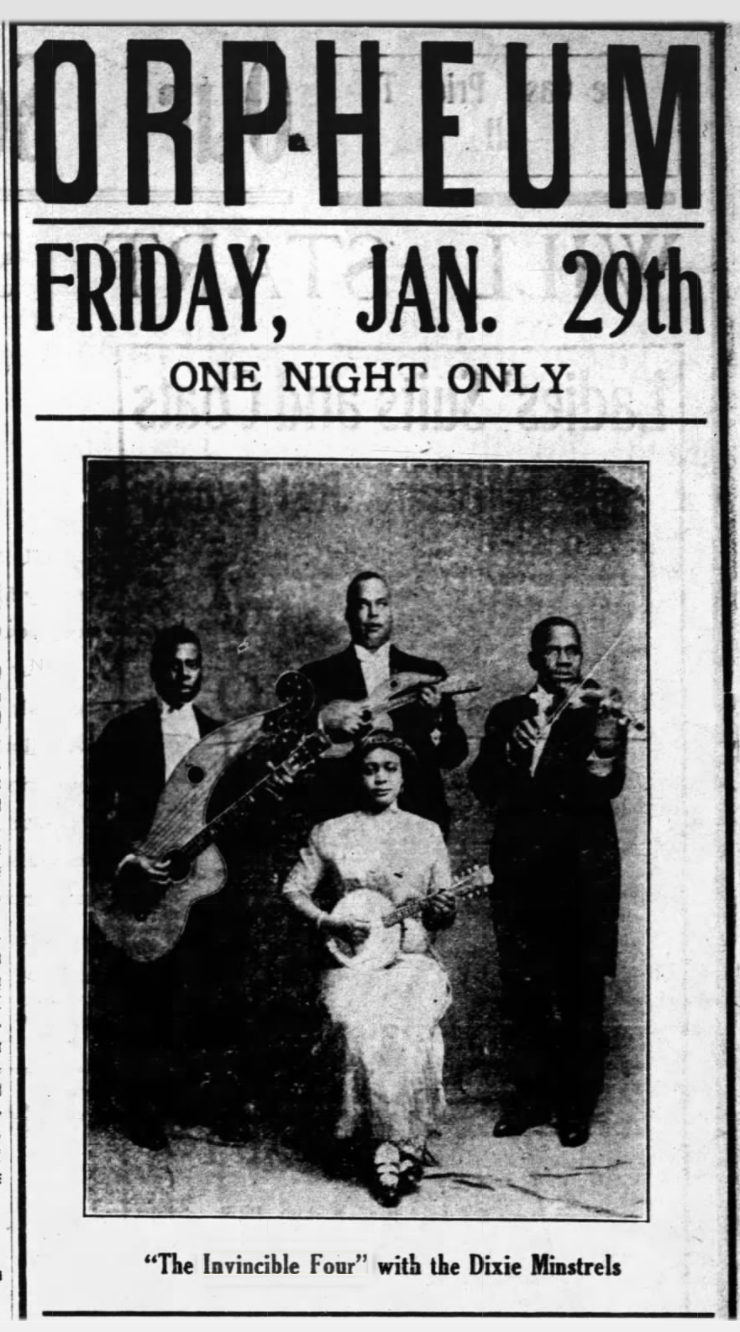
There is one mention in 1916 of the quartet with Johnson joined by three new members: “Jordan, Towles and Logan.” Did Mackey take a break from the group?
By October 1916, Mackey was back and all the previous quartet members were gone, replaced by Johnson’s wife and daughter Dorothy. They also changed the act’s name to the “Invincible Concert Company” (or very rarely, the “Invincible Four Concert Company”), perhaps because they were touring with a fifth member: J. W. Cooper, the “greatest ventriloquist on the American stage.” Cooper (seen in the cameo portrait at left) did his acclaimed solo ad with a troop of wooden puppets, then joined the 4-part harmony quartet to sing a fifth baritone part.
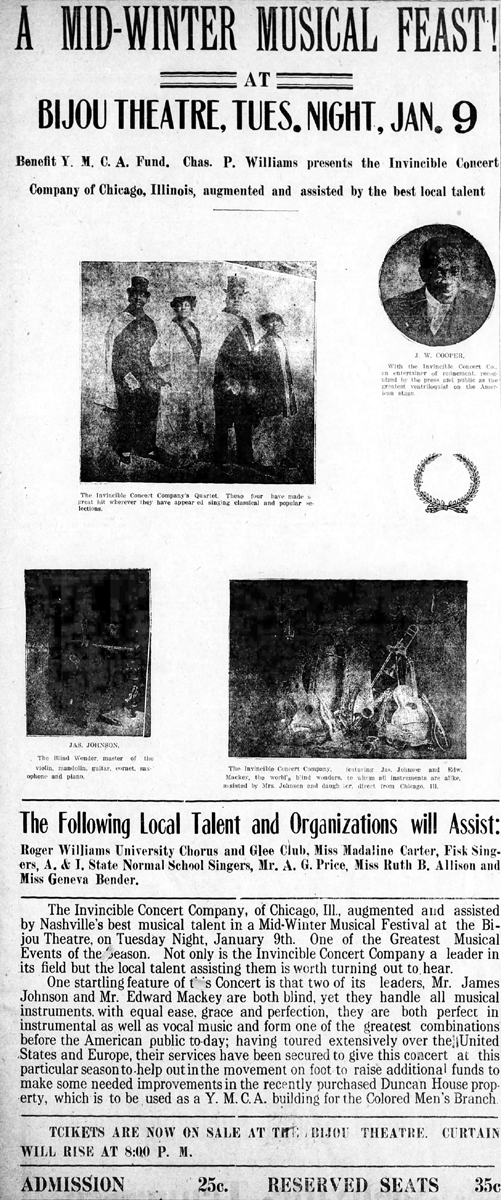
The detailed advertisement above appeared on January 5th, 1917 in the Nashville Globe and includes the well-known image of the final quartet with their 18+ instruments. We can thus identify the women in the two famous images at the top of the article as Johnson’s wife and daughter, while placing the photography session for them in 1916. Note that the large Gibson harp guitar and three Gibson mandolins have now been added; they look to be early/mid-teens instruments, other than one pre-1909 “3-point” mandolin. At this time, the Gibson was the most expensive harp guitar offered, costing $248 (the equivalent of $6200 in today’s dollars).

The image appeared once again in May 1919 in the NAACP’s publication The Crisis in the group’s own ad listing their Kansas City, Missouri address. While the group was by now based there, their new manager Charles P. Williams was in Chicago, so the act was listed alternately as being “from Kansas City” or “from Chicago.” Also in 1919, Cooper left the act and they added Mackey’s wife as an additional singer.
And – they were still funny! A 1919 review described the act as “music and singing interspersed with humor and wit.”
By October of 1919, Johnson and Mackey had expanded the group further to seven members, calling it now “The Greater Invincible Concert Company.” The three new members can be seen in separate images in the two extant advertising cabinet cards, shown below. My guess is that that’s Mrs. Mackey on the right, and possibly their daughter on the left. The additional violinist remains unknown.
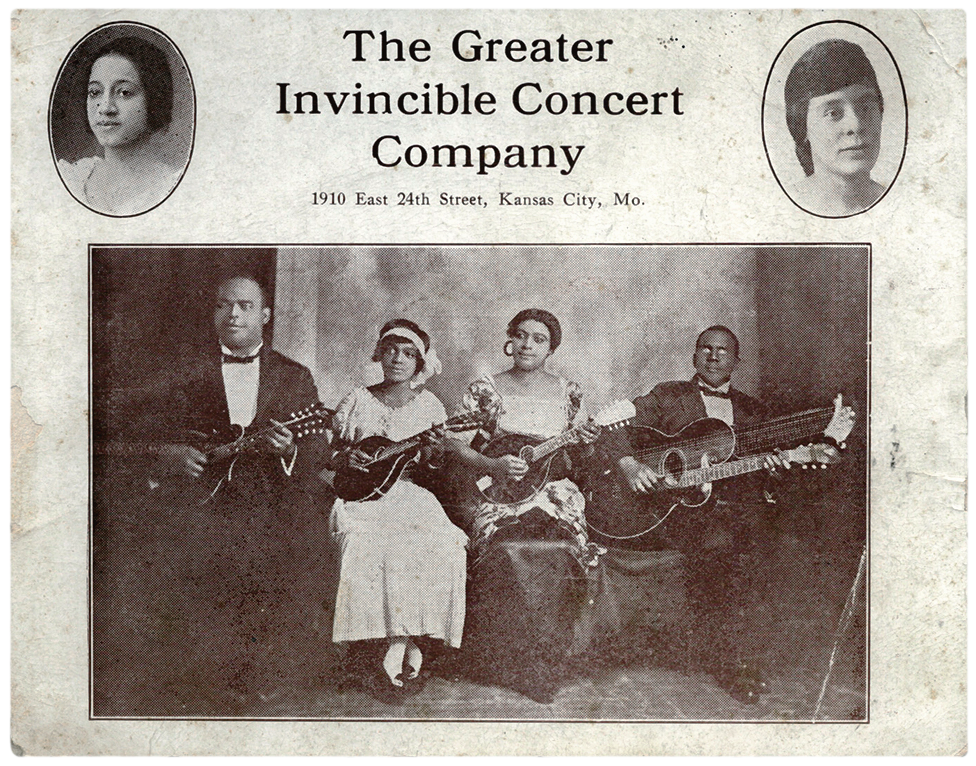
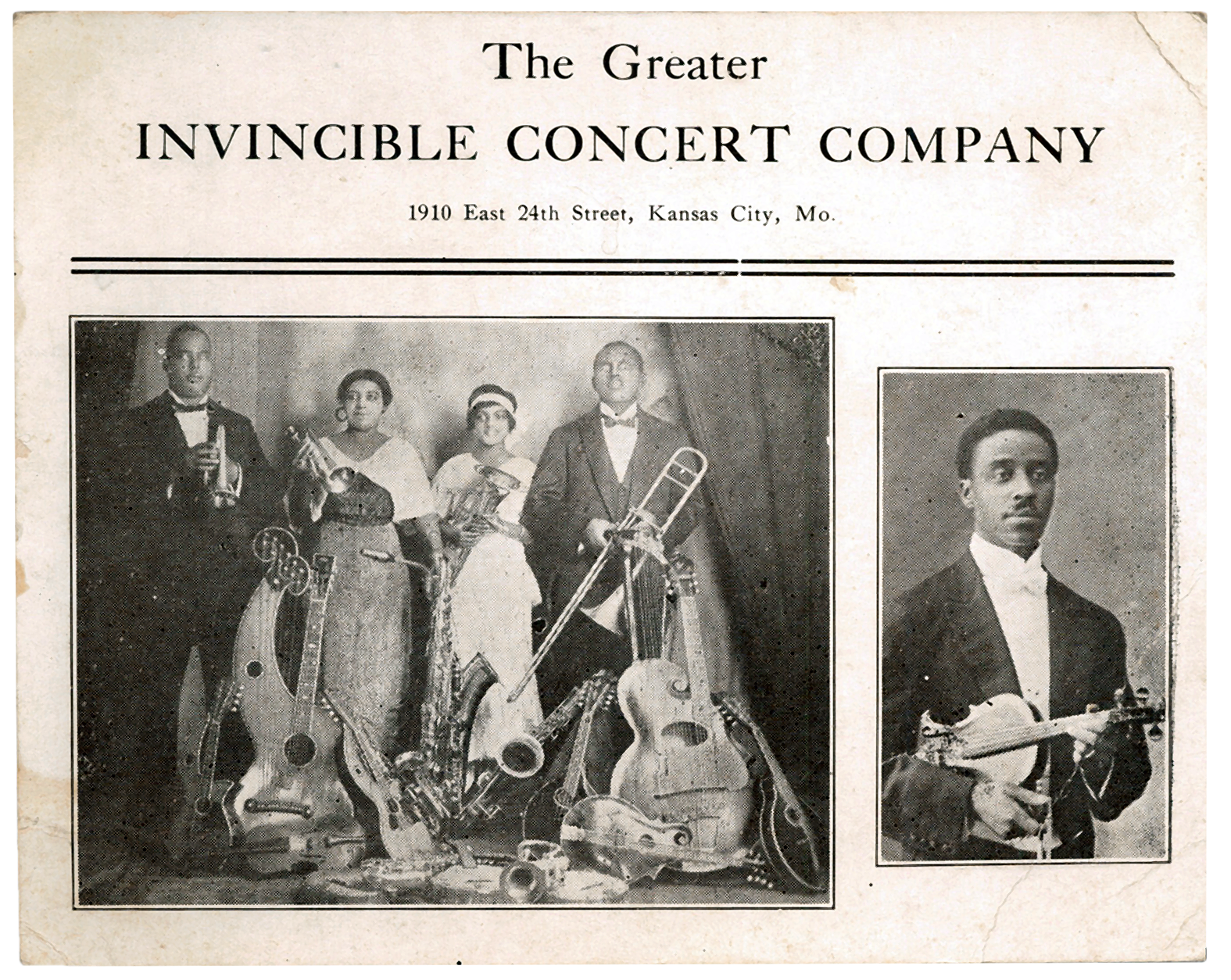
This final act toured at least into 1922 when they appear to have retired.
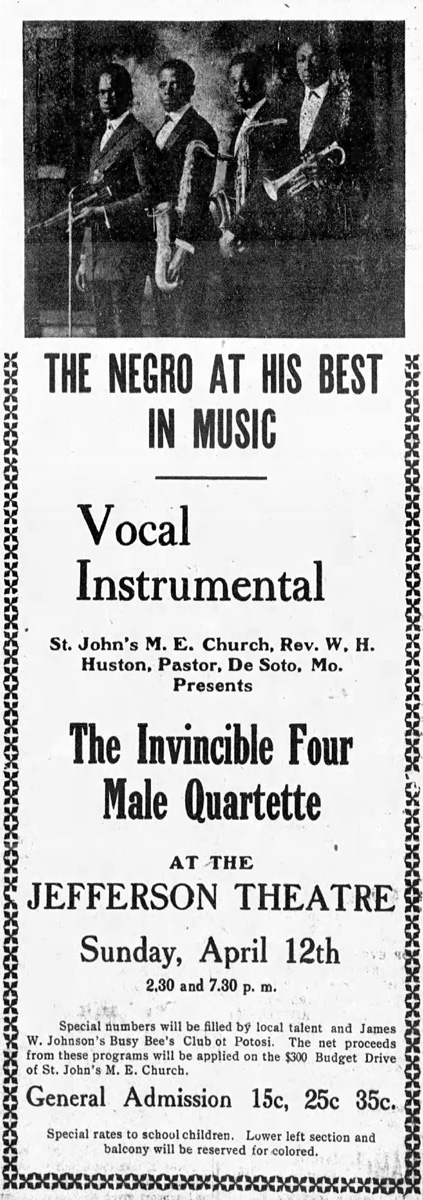
At some point, a new “Invincible Four Male Quartette” was formed at George R. Smith College in Jefferson County, Missouri. It was undoubtedly named with James Johnson’s blessing, since his own “Busy Bees Club” made an appearance at their church concert on April 12th, 1925 (the college itself sadly burned downed 14 days later).
This is another historical act that begs to be heard – and as readers inevitably bring up, did they record?! Well, for a couple hours I was beside myself to discover well over a dozen sides by the “Invincible Four,” sometimes backing up soloists. But alas, no. The identical name turned out to be a pseudonym for the “Peerless Quartet” (itself an alternate-label name for the “Columbia Quartet”), a white male quartet that recorded sentimental WW1 songs from 1918 to 1920. Interestingly, their founder (Frank C. Stanley) “named his Peerless Quartet after a black vocal quartet from the 1890s.” Did he similarly appropriate the name of the popular Invincible Four? S hame, if so.
Speaking of shameful…when one researches this period, it’s impossible to avoid the obvious. Invariably, the newspaper announcements stated that the I4 was a “colored act,” as at that time, the distinction simply had to be made clear. And despite the group’s success and popularity with both blacks and whites, theaters and promoters advertising their shows would often similarly confirm that “special seats will be reserved for white people.”
Personal sidebar:
As I write this piece, it is one hundred years later and one month after America’s history-making Capitol insurrection. We’ve come a long way, but have we really? “Black Lives Matter” immediately became a phrase of contention (I’ll leave it to others to dissect its meaning and judge whether those who insist “all lives matter” are racist or just clueless). Meanwhile, I’ve been trying to do a Harp Guitar article tie-in during Black History Month each year, every year remaining leery of a perceived token insincerity (“That’s nice, but really…just a month?”) and understanding full well my own naivety and status as a spoiled, entitled white male. Still, I’m trying to focus on the positive, and so I choose to remember and celebrate and share the history of those in this article.
The story of these two blind musical friends not just making a living, but becoming talented singers, multi-instrumentalists and witty comedians, marrying, having children and finding success, and – judging by the images and reviews – all with obvious dignity, is incredibly inspiring to me.
Invincible, indeed.
Note to scholars: I did the research, organization, layout and writing for this piece in a whirlwind 3 nights. All of my sources and more should be easily findable on Newspapers.com and elsewhere. If anyone chooses to take this historical research or biographical ancestry further, please share with us.

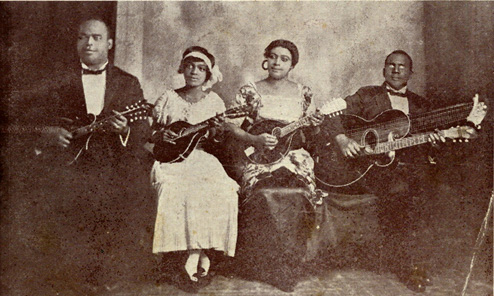
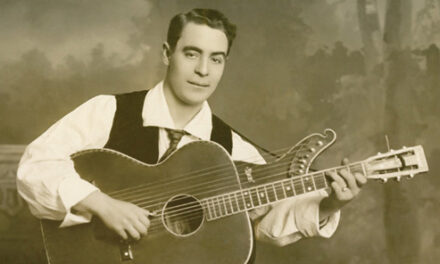
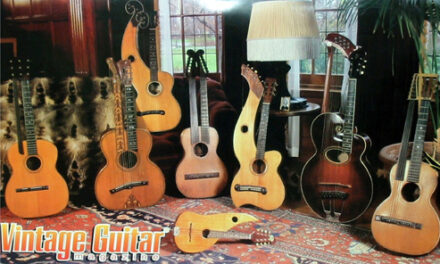
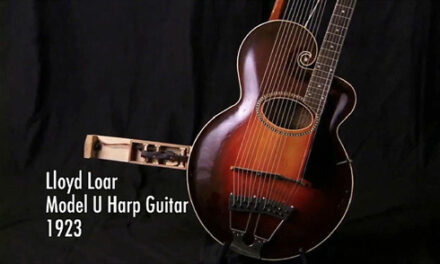
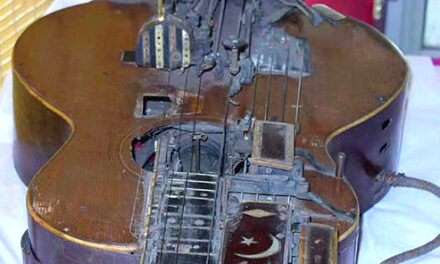
That was fantastic, Gregg! A number of thoughts came to as I looked at the photos of the Invincibles and also went back through your 2013 article and all the photos in it. One is how amazing it would be if we could also hear these musical acts. Another was that I have often stayed in Ark City, Kansas – where James Johnson grew up – when I was playing at the Winfield festival, 10 miles to the north. Another thought was a similar reflection on how far our country has collectively come on the journey to live up to the aspirations of our foundational documents. The answer is – not far enough, by a long shot. Thanks for doing the work to put this all together. It’s fascinating stuff!
sb
One day I will bring the Invincible Four to life on record, despite a century of separation they will live up to their names.
I replied to your comment on the Eyes Are The Window to the Soul Facebook page concerning the Invincible Four. The images are also in our archives, Nanny Jack & Co, LLC. Would love to interview you for our podcast.